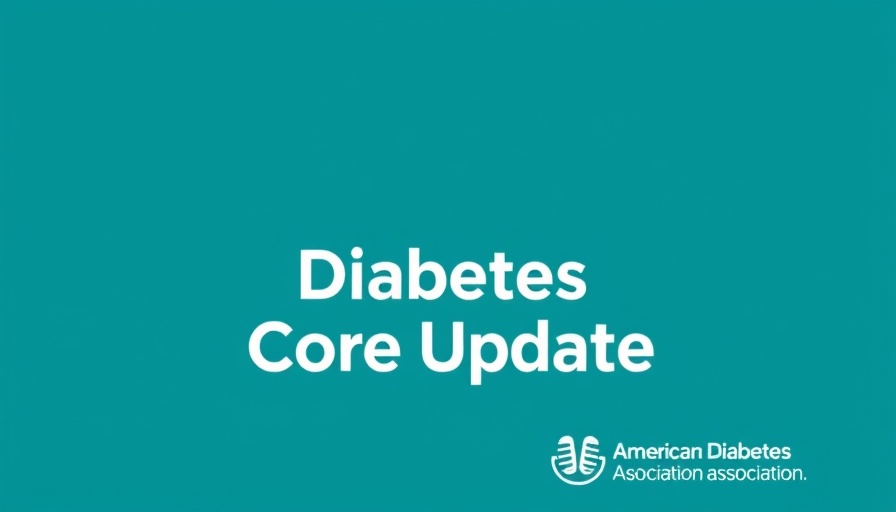
Understanding the Latest Advances in Diabetes Management
The landscape of diabetes treatment continues to evolve, with promising developments on the horizon thanks to robust clinical research. In this month's Diabetes Core Update, we explore groundbreaking trials and studies highlighting new therapies that offer hope to millions affected by diabetes and obesity.
In Diabetes Core Update – September 2025, we delve into promising advancements in diabetes management, exploring groundbreaking studies and findings that have significant implications for patients and healthcare providers alike.
The Promise of Kagrin Tide and Simaglutide
The latest phase 3A trial unveiled encouraging results regarding the combination therapy of kagrin tide and simaglutide in adults with obesity. 3417 participants enrolled in this trial witnessed an impressive average body weight reduction of 20.4% over 68 weeks compared to the mere 3% reduction seen in the placebo group. Such findings underline the potential of combining different mechanisms of action—kagrin tide, an amlin agonist, works synergistically with GLP-1 receptor agonists like simaglutide to enhance appetite control and promote significant weight loss.
Exploring the Role of Nutrition in GLP-1 Therapy
In conjunction with the pharmacological advancements, a comprehensive joint advisory from major health associations emphasized the critical role that nutrition plays in supporting GLP-1 therapy for obesity. As highlighted by nutritionists, those on GLP-1 medications must prioritize their dietary intake to mitigate nutrient deficiencies. With many individuals unknowingly consuming insufficient protein during caloric reductions, maintaining muscle mass becomes ever more imperative.
Revolutionizing Insulin Management: The Icosma Trial
The recent findings from the combined three trial showcased the efficacy of Icosma, a once-weekly insulin regimen, versus conventional multiple daily injections. Patients transitioned from an average of 28 injections per month to just 8, illustrating a crucial advancement in diabetes management that could improve adherence and quality of life. Both treatment groups achieved comparable decreases in A1C levels, with Icosma showing favorable outcomes in body weight and instances of hypoglycemia, reinforcing the non-inferiority of this innovative approach.
Empowering Patients Through Gradual Titration Techniques
An insightful study on the gradual titration of simaglutide revealed that patients adjusted to treatment more comfortably when introduced to lower dosages initially. The pilot findings indicated significantly lower drop-out rates due to gastrointestinal side effects in the flexible dosing group. This patient-centered approach encourages adherence while potentially improving outcomes as the individual’s comfort with the medication increases.
Tzempetide vs Simaglutide: A Comparative Analysis
The head-to-head trial comparing tzempetide to simaglutide revealed that tzempetide offers a greater average percentage weight loss, specifically 20.2% versus simaglutide’s 13.7%. This finding reinforces the continual advancement in pharmacotherapy options for obesity as it relates to diabetes management. Such innovative options could transform the conventional treatment landscape for countless individuals battling these interrelated health issues.
The Broader Implications for Diabetic Care
These recent medical advancements and clinical findings signify a critical shift in how diabetes and obesity are managed. Health professionals—including diabetes counselors and nurses—must leverage this evolving knowledge to improve patient outcomes through informed nutritional advice and personalized treatment plans.
The implications of these findings extend beyond clinical measures alone; they emphasize the necessity of a comprehensive approach to managing diabetes through pharmacotherapy, nutrition, and patient education. By blending these aspects, health professionals can offer a holistic framework that not only reduces symptoms but promotes overall health and well-being.
As the fight against diabetes progresses, adopting innovative therapies, understanding their nutritional implications, and enhancing patient adherence through practical and flexible management strategies are pivotal. Healthcare providers are encouraged to stay informed and proactive in applying the latest research to foster better health outcomes among patients.
In summary, the developments discussed in the Diabetes Core Update herald a new dawn for diabetes treatment paradigms. Patients, healthcare professionals, and researchers must collaborate to harness these advancements for broader public health benefits. Together, we can enhance wellness for individuals living with diabetes and pre-diabetes.
 Add Row
Add Row  Add
Add 




Write A Comment